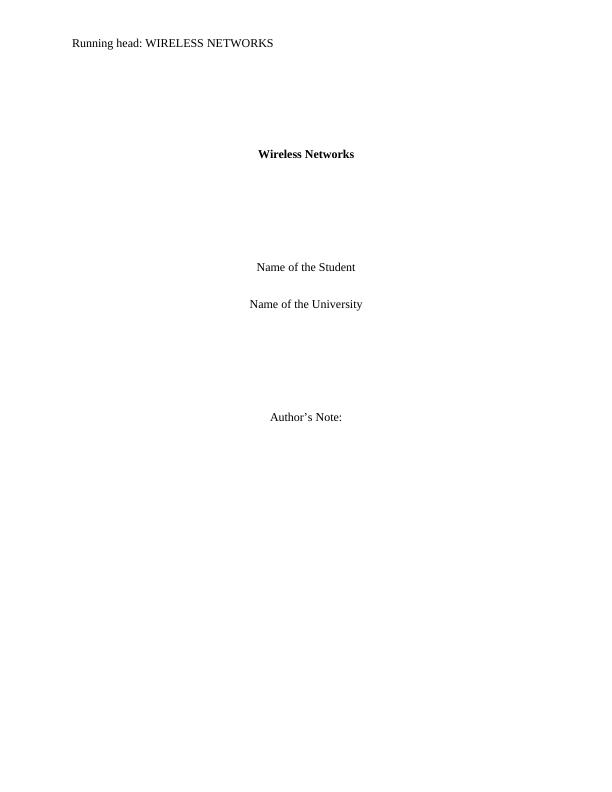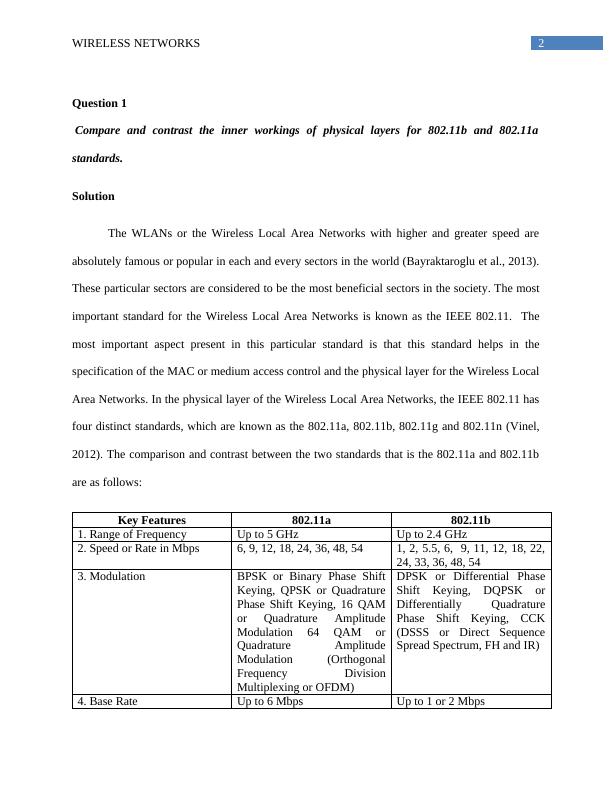Wireless Local Area Networks vs. 802.11b
11 Pages2332 Words256 Views
Added on 2020-03-16
About This Document
WIRELESS NETWORKS 7WIRELESS NETWORKS Wireless Networks 2013 Name of the Student Name of the University Author’s Note: Question 1 2 Question 2.a 3 Question 2.b 4 Question 3 5 Question 4 8 References 10 Question 1 Compare and contrast the inner workings of physical layers for 802.11b and 802.11a standards. In the physical layer of the Wireless Local Area Networks, the IEEE 802.11 has four distinct standards, which are known as the 802.11a, 802.11b, 802.11g
Wireless Local Area Networks vs. 802.11b
Added on 2020-03-16
ShareRelated Documents
End of preview
Want to access all the pages? Upload your documents or become a member.
Networking Concepts Assignment - Wireless Local Area Networks
|11
|2124
|64
Outlines a Wireless Local Area Network
|9
|2033
|187
Networking Assignment | Wireless Sensor Network
|13
|2886
|64
Inner Workings of the Physical Layer of IEEE
|11
|2500
|82
Wireless Networks Assignment
|12
|2732
|95
Wireless Digital Communications Assignment
|9
|1877
|266




